Christian Meta NLP Practitioner Training Download
$350.00 $175.00
This Christian based Video training Download set contains 24 Download Files approximately 1 hour in length.
Patterns for Renewing Your Mind International, Inc.
Bobby G. Bodenhamer D. Min. and Mike L. Davis Th.D.
As a man thinketh… so is he!
Meta NLP Practitioner training
This Christian based seminar contains 24 Download Files approximately 1 hour in length.
Patterns for Renewing Your Mind (PRM) Certification is for Christian counselors, pastors, lay leaders and those who minister inner healing or involved in the healing ministry. It is also ideal for those who want to become more effective in their communication skills.
Certification as a Patterns for Renewing Your Mind (PRM) Practitioner consists of 49 hours of training (Approximately 2 optional hours for practicing the patterns, answering questions and the giving of additional materials will be offered during the evenings in most trainings.). Each section of study results from a carefully constructed model designed to build one on the other. Comprehension of each subject moves the student to the next level of expertise. Thus, students must attend each class and participate in the exercises. Training will consist of lectures, demonstrations and exercises. Students will perform numerous exercises for both practice and retention. Patterns for Renewing Your Mind are learned by doing.
The following subjects are covered during the 49 hours of classroom lectures, demonstrations and exercises. Only lectures and demonstrations were video taped, participant exercises were not.:
Definition and History – During this training we are convinced that you will experience the power of the Holy Spirit as you come to realize just how useful the tools presented will be to your personal walk with the Lord as well as to your ministry. The history of the model will reveal the impressive body of material, practical experience and research upon which this program is based.
The Key Presuppositions of Patterns – The Key Presuppositions of PRM represent the beliefs that excellent communicators hold. Our Lord demonstrated excellence in ‘fleshing out’ these presuppositions. He provided a model for us to follow in our relating to other people and to ourselves. A major goal throughout the practitioner training consists of your behavioral integration of these presuppositions meaning you operate from the habitually and unconsciously.
The Three Qualities of Exceptional Communicators:
1 Know your outcome.
2 .Know whether or not you are getting it. Have observational skills.
3. Know how to get it.
Behavioral Flexibility – The Practitioner training provides the training necessary for behavioral modification. By controlling your behavior you will be equipped to control the conversation and to obtain your outcome. The rapport building skills plus the many other models of PRM will allow for flexibility of behavior.
Elicitation of a Well-Formed Outcome – Learn to identify and develop high quality descriptions of specific goals for change that are positive, practical and ecologically workable for everyone.
What does the biblical text say about setting goals? Jesus lived his life around a specific and singular purpose. ”My food is to do the will of Him who sent Me, and to accomplish His work” (John 4:34). He worked to fulfill his father’s will by ‘being raised up’ on the Cross. Peter expressed the centrality of the cross in Jesus’ life in his Pentecost sermon (Acts 2:22-36). The Apostle Paul also expressed a singular purpose of will and direction:
‘Brethren, I do not regard myself as having laid hold of it yet; but one thing I do: forgetting what lies behind and reaching forward to what lies ahead, I press on toward the goal for the prize of the upward call of God in Christ Jesus’ (Philippians 3:13-14).
Whether Paul traveled to Macedonia or to Corinth, he directed his ministry toward specific goals. The call of Christ involves the call of obedience to goals he provides. We see a goal orientation in Jesus’ challenge to the disciples to take up his cross and follow him. The PRM Model enables us to go beyond mere goal setting into developing a desired outcome. Here we do not talk just about setting goals but about setting outcomes. How do these differ? Goals describe in general terms, outcomes in specifics. An outcome represents a goal developed with specificity that endows us with a very clear understanding of what to do.
1) State the outcome in positive terms.
2) Specify the outcome in Sensory Based Terms.
3) Specify the outcome in a way that you find compelling.
4) Run a Quality Control check on the Outcome for Balance and Ecology.
Questions from Cartesian Logic:
- What will happen if I get it?
- What will happen if I don’t get it?
- What will not happen if I get it?
- What won’t happen if I do not get it? – Non-Mirror Image Reverse
5) Self-initiated and maintained.
6) State the Context of the outcome.
7) State the Resources needed to achieve the outcome.
8) Know when you have your outcome?
Sensory Acuity – You will learn how to discern the non-verbal signals from other people. Each state change in a person will be accompanied by external signals from their body. Sensory acuity skills enable you to discern the state changes by their body language. You have unconsciously been doing this all your life. Sensory acuity skills permit you to bring this to conscious level and to use the skill to facilitate communication.
This model allows us to clearly distinguish between external and internal processing (seeing, hearing and feeling). And it just so happens that Jesus made that same distinction when he spoke to some closed‑minded traditionalists. He essentially said, ‘You see and hear, but don’t get it.’
‘This people’s heart has grown dull, and their ears are heavy of hearing, and their eyes they have closed, lest they should perceive with their eyes, and hear with their ears, and understand with their heart, and turn for me to heal them’ (Matthew 13:15 RSV).
Listen also to how Paul described the source of his message: ‘No eye has seen, nor ear heard, nor the heart of man conceived’ (I Cor. 2:9). In context, this identifies the sources of human knowledge. We can use sensory‑based information – what you see with our eyes and hear with our ears from external sources.
Calibration – You will enhance your gifting to discern people and detect state changes. Calibration means you can detect the meanings behind each physiological shift the client makes. This skill will facilitate your ability to communicate more effectively and to recognize therapeutic needs, changes and confirmations. Such knowledge moves the practitioner to a whole new level of listening skills – a necessary ingredient in becoming a Christian healer.
Building and Maintaining Rapport – Much of communication happens out of awareness or at the unconscious level. Renewing Your Mind rapport skills teach you how to communicate at the unconscious level. Mirroring, matching, pacing and leading skills will enable you to become ‘like’ the other person. People like people who look and act like them. You will learn how to mirror and match physiology, tonality and predicates (process words). Rapport skills permit the practitioner to be flexible in communicating. Flexibility allows for control of the conversation.
Rapport moves us into a more harmonious state with another. Our spirit comes to agree with another’s spirit. Paul wrote ‘be in the same mind’ (I Corinthians 1:10). When two people adopt the ‘same mind’ about something – they enter into rapport. Detecting resistance from someone signals us that we have lost rapport.
Representation System (The Movies of your Mind) – The brain receives information through the five senses (Visual, Auditory, Kinesthetic, Olfactory and Gustatory – VAKOG). In Patterns for Renewing Your Mind we refer to the five senses as the representation system. We not only receive information through the representation system, we also re–”present” this information in the brain through this system. You will learn how the representation system provides the basis to all thought processes. The emphasis and power of Patterns states that change work is done at the process and not the content level. The representation system is fundamental to mental processes. Understanding of the representation system provides basic knowledge for communication and change fundamental to all Renewing Your Mind communication and therapeutic skills.
Interesting enough the Bible also glories in sensory‑based descriptions. The writers utilize all of the sensory channels in communicating. King David expressed his spiritual devotion using the sensory channels.
‘O God, thou art my God, I seek thee, my soul thirsts (G) for thee, my flesh faints (K) for thee, as in a dry and weary land where no water is. So I have looked (V) upon thee in the sanctuary, beholding (V) thy power and glory. Because thy steadfast love is better than life, my lips will praise thee (A). So I will bless (A) thee as long as I live; I will lift up my hands (K/M) and call (A) on thy name. My soul is feasted as with marrow and fat (K/G), and my mouth praises thee with joyful lips (A) … ‘ (Psalm 63:1‑5).
Submodalities (The qualities of your movie) – A submodality equals the smaller coding of the representation system. Submodalities define the qualities of our internal representations. Visual describes one of the representation system or modality. To discover the submodalities of the visual representation system one would ask whether the internal picture acts as a movie/still, black and white/color, bright/dark, etc. You will learn how higher linguistic structures govern submodalities and hence, perception. This may sound complicated but to make it more practical just know that when the “Word of God” is applied to our perception, the “Word” modifies and controls the images inside of our heads from which we operate.
Knowledge of these higher linguistic structures and how they influence the qualities of our inner movie will result in your ability to resolve grief, change beliefs, change values and to change the feelings of any memory in brief therapy. All permanent therapeutic changes happens at these higher levels. Knowledge of submodalities allows the practitioner to communicate and to do therapy with precision. An introduction to submodalities comes early in the training. The advanced therapeutic use of submodalities happens during the latter part of the training with far more training in the Master Practitioner Level. Also, Learning the basics of submodalities gives the practitioner immense control over running his/her own brain in accordance to the will of the Lord for them.
Meta-States® – Developed by L. Michael Hall, Ph.D., Meta-States refer to the brain’s ability to have thoughts about thoughts. Each thought about a thought functions at a higher logical level and therefore modulates the original thought. Adjectives and adverbs work in just the same manner. An adjective modifies a noun. An adverb modifies a verb or another adverb. The adjective sets the frame around the noun and gives it definition. Consider the noun “love”. There is a difference between “passionate” love and “sympathetic” love. There is a difference between “familial love” and “political” love.
Likewise, anytime we take a thought and apply it to another thought the first thought will change in meaning. For instance, you can experience anger towards something or someone. Now, “appreciate” your anger and notice how that changes your perception of your anger. Or, better yet, apply a thought of “calmness” to your anger and notice how that changes your anger. Utilizing this simple yet profound cognitive process provides a powerful tool for state control. Throughout the Practitioner (And Master Practitioner) training, you learn how to manage your states through Meta-States.
Knowledge of Meta-States will empower you to actually “apply” the Word of God to your life and to teach others how to do the same. Many ask the question, “Why can’t I leave my problem at the altar? I want to.” You probably have struggled with some problem that you just could let go. Jesus taught us not to worry (Luke 12:22). He said, “do not worry…” (NIV). That simple phrase is a Meta-Stating process for you are “applying” the state of negation “not” to the state of “worry”. But He goes further. In verse 31 He states: “But seek his kingdom, and these things will be given to you as well.” Here our Lord sends our brains away from “worry” and onto Him and His Kingdom that we are a part of. Now, I ask you, “What happens to worry when it comes into the presence of the Kingdom of God?” You will learn how to make these mental shifts inside your head in such a manner as to “leave the worry at the altar”.
The Swish Pattern – Developed by Linguist Richard Bandler, the Swish Pattern uses the principles of submodalities to eliminate unwanted behaviors such as bad habits. Richard Bandler says that this presents one of the most effective techniques he has developed. The example above from Luke 12 demonstrates this process. Our Lord “swishes” our brains from “worry” to “his kingdom”. This pattern is based on what Gestalt Psychology calls foreground/ background. If we are worrying, than that which we are worrying about is in the foreground of our mind. The thought of the Kingdom of God is somewhere in the background of our mind. This pattern teaches us how to bring forward that which we want to the foreground of our brain and to send in the background those problem thoughts-states that we don’t want.
Strategies – Strategies describe the mental sequencing of the movies and language structures that define the structure behind all behavior. The explanation of strategies comes early as an introduction during the first of the training. When God created us, He made us in such a way that our behaviors directly proceed from our thinking processes (movies & language). This model allows the participant to understand at the macro level what is going on inside our heads in order to produce a certain behavior. Such knowledge allows for interceding within the strategy with the Word of God to bring about change in the strategy and thus in the behavior.
AssociationDissociation – This important distinction describes the mind’s ability to remove much of the emotion from a memory. Let us experiment. Recall an unpleasant experience. Note what and who you are seeing in the memory. If you see yourself in the picture of the memory, you have dissociated from the memory. You have stepped outside of the memory. By stepping aside from, or out of, memories, imaginations, representations of trauma, etc. we adopt different perspectives, different frames of mind, and actually a higher state of mind — a higher-level of awareness. Stepping outside a memory tends to diminish the emotional intensity of that memory. When we do so, we can then, from that second-level or third-level awareness “dissociate” from all of the emotions that the original frame created. Dissociation allows for easy access to a state of being with Jesus and seeing the situation from His perspective.
On the other hand, If you do not see yourself and you are looking through your own eyes, you associate into the memory. As dissociation removes much of the emotion from the memory, association usually results in the experiencing of much more of the emotion from the memory. For those positive memories, associating inside a memory is useful. I love to recall that moment as a nine year old child when I accepted Jesus Christ as Lord of my life. When I go back to that little mountain church and bow down at that altar, much of the emotion that I experienced then I can feel now. Indeed, it is as if it is now happening. I am experiencing tears now coming to my eyes as I type this. That was 53 years ago and by ‘associating’ back into that moment I re-live and experience again His marvelous unconditional love.. When I am in that state of receiving God’s love, I know that Satan does not have a chance with me. Yes!!!
However, it is those painful memories, those “Bitter Roots”, that we want to dissociate from. We want to “step outside” or dissociate from them so that we can experience that memory from our present adult mind-set. During the training, we will take the time necessary to make sure that each participant can move from association to dissociation. This knowledge is crucial to learning how to maintain the state of choice that we wish to experience.
Anchoring – During Jesus’ trial, Peter denied knowing Christ three times. Following the third denial ‘…the Lord turned and looked at Peter.” Peter remembered the word of the Lord, how he had told him,
‘Before a cock crows today, you will deny me three times.’ And he went out and wept bitterly (Luke 22:61-62).
Jesus did not have to speak to Peter, he only looked at him and Peter’s mind immediately went back to that moment when the Lord told Peter that Peter would deny Him. Our Lord’s look “triggered” Peter back to that moment when he heard those painful words from the Lord. This is known as a visual trigger or “anchor” as we call them. By just a look, Jesus brought to Peter’s consciousness his prior statement (Luke 22:34). Once this memory surfaced in his consciousness, Peter’s heart broke.
In Deuteronomy 7:17-17 we find Moses telling the people of Israel that when they face nations greater than them that they are not to be afraid of them. And then he tells them how to not be afraid.
“You shall remember what the Lord thy God did unto Pharaoh and unto all Egypt. The great temptations which thine eyes saw and the sign and wonders and the mighty hand and stretched out arm whereby the Lord thy God brought thee out: so shall the Lord thy God do unto all the people of whom thou art afraid”
God, through Moses told Israel that when they felt ‘fear’ they were to “remember” how God delivered them from Egypt and all of the miraculous things he did. The word ‘remember’ in Hebrew is zaker and means “to recall something to mind in order to be moved by it”. Thus the feeling of ‘fear’ was to be attached to a state of fear. Whenever their mind-body system felt fear, they were to let that be a reminder (trigger, anchor) to “swish” their brain to remember how God had delivered them out of Egypt and know that He could do it again.
Both of these Biblical examples illustrate what Pavlov discovered in his work with dogs. He learned that he could sound a tuning fork when he handed the dogs a steak and teach the dog to respond “only” to the tuning fork when the steak was removed. He would place a steak in front of a dog’s nose and ring a tuning fork at the same time. The dog’s mouth would salivate. His goal was to teach the dogs to associate the sound of the tuning fork with the smell of a steak. Sure, enough, just as the dog’s mouth would salivate when they saw the steak, they also salivated after the steak was removed and the dog only heard the tuning fork.
The tuning fork became an “auditory” (sound) stimulus for the dogs to think that they were fixing to get a steak. This mind-body phenomenon is quite useful in managing our states and sending our (and other’s) brain to a more resourceful state. We have specific techniques for doing this and you will learn several of them in this training.
Reframing – We live inside a “matrix of meaning frames”. Oft times we discover that our “matrix” has us rather than our having our matrix. In working on ourselves and with people in the counselling role, it is with these “matrix of frames” that we work with. We do not work with the external events that led to the development of their matrix. We work in the “now” and in working on ourselves and with the client; we attempt to lead ourselves or them from living inside a toxic matrix to living inside a healthy matrix of meaning frames.
As Christians, we seek to lead in re-defining their matrix from that of unhealthy, unchristian and even demonic matrix to that of a matrix defined by the Word of God. This is exactly, I believe, what Paul meant when he said, “And be not conformed to this world: but be ye transformed by the renewing of your mind, that ye may prove what is that good, and acceptable, and perfect, will of God” (Romans 12:2). Our outcome is to change ourselves and to lead the client from “worldy” thinking to “Godly” thinking. “Renewing our mind” happens directly as a result in changing the meanings of our beliefs, values, understandings, principles, etc from that of ungodly thinking to that of thinking that honours God.
This introductory training is about utilizing some very helpful tools that will assist you in both:
1) Leading the client (or ourselves) in being ready to “renew their mind” in discovering the toxicity of their thinking; and,
2) Then to provide suggestions for them in taking different perceptual views of how they have defined their matrix and how the Word of God offers them different viewpoints as to the meanings the wish to define their matrix by.
Bitter Roots/ Strongholds Unconscious Sabotaging Frames – The genius of the PYM Model is that it gives the practitioner the tools to direct unconscious toxic-sabotaging frames to the powerful healing power of the Lord Jesus Christ. Much time will be spent on these toxic meaning frames, i.e. those minor personalities within all of us that operate contrary to our total good. The Hebrew (12:15) writer refers to these toxic frames that sabotage our lives as ‘Bitter Roots’:
‘See to it that no one misses the grace of God and that no bitter root grows up to cause trouble and defile many.’
Paul stated in Romans 7:19 ‘For what I do is not the good I want to do; no, the evil I do not want to do—this I keep on doing.’ In Corinthians Paul referred to them as ‘strongholds’ (2 Corinthians 10:4). For healing to take place, these ‘Bitter Roots’ or ‘Strong Holds’ must be brought to consciousness and then given to the Lord for one’s mind to be renewed. That is what PRM is all about.
The Six-Step Reframe – The Six-Step Reframe provides the communicator with a formal reframing process that provides ways of stopping unwanted behavior through providing healthier alternatives. This way of reframing allows the preservation of the positive intent of the unwanted behavior. At the same time, new and healthier choices provided other choices for fulfilling the positive intent of the unconscious part. First introduced during the practitioner training, we devote much more time to this model during the Patterns for Renewing Your Mind Master Practitioner Certification Training. In the Practitioner Module we overview it for language skills training as time permits.
Language Patterns:
- “Chunking Down” – The Meta-Model – This model basis itself on the language patterns of the Meta-Model. This model is a series of questions, which allows the practitioner to transform low quality descriptions from the other person into high quality explanations. The Meta-Model restores the deletions, distortions and generalization that all speech (surface structure) contains. These surface structure descriptions we use often cause poor communication because they are so vague. The word ‘Meta’ means above. The Meta-Model utilizes language about language, i.e. which chunks meta (above) to the language in use. Our Lord was able to cut through the chaff and get to the kernel of truth. This model enables the practitioner to dramatically cut down on the time needed to gather information. Knowledge of the Meta-Model allows the practitioner more flexibility in controlling the communication.
- “Chunking Up -” Milton Model – This model came right out of the work of Psychiatrist Milton Erickson, M. D. Erickson is well known in medical circles for healings he got from his patience without the use of drugs or surgery. The Milton Model acts as the inverse of the Meta-Model. The Meta-Model “chunks down” – goes for specifics. The Milton Model utilizes general, large chunk language and allows the client to search for their own answers way up “high”. Skill with this model will enable the practitioner to lead the Christian in accessing those higher levels of the mind where their spiritual beliefs and values lie.Skill with the Meta-Model and the Milton Model free the Practitioner to work at the unconscious level. These two models used in tandem allow the practitioner to uncover or discover the client’s “Bitter Roots” so that the client can then take their “Bitter Root” to Jesus for His healing. These two models used together provide extremely effective tools in teaching the client just how the can “Renew Their Mind” in the likeness of our Lord.
- Metaphor – Patterns for Renewing Your Mind provides us with a model to construct and deliver metaphors to bring about desired outcomes in our acquaintances and clients. The language Patterns provide extremely helpful tools in teaching, negotiating, and managing, preaching, therapy and in all areas of communication. The utilization of metaphors provides the public speaker with some extremely helpful and useful tools. It seems that everyone loves a story. In therapy they provide the frame or mindset to initiate change and to solidify change. In the latter part of His ministry, Jesus resorted to using Parables for the majority of His teachings. A Parable is a metaphor and Jesus was a master of their use. Milton Erickson mastered the use of metaphors and I am told in his later life his therapies consisted almost in entirety in the utilization of metaphors.
How to Utilize Your Time-Line to Initiate Change – Based on the book that I wrote with L. Michael Hall, Ph.D., Time-Lining: Patterns for Adventuring in ‘Time’, you will receive introductory training in:
a) How Your Brain Tells Time – Learn how your brain specifically codes “Time” and how you can utilize that knowledge in managing your time rather than your time managing you.
b) Through-Time and In-Time – Understand why some people are always on time and others are always late and what significance that has to personality.
d) Using Time-Lining In Eliminating Negative Emotions – How to lead the client in discovering the “Bitter Roots” on their Time Line and how to apply the unconditional Love of our Heavenly Father onto those “Bitter Roots”
The Drop-Down Through Pattern – This is the single most effective pattern for bringing about quick and permanent changes in healing old hurts that I have ever used. I use it all the time. The second most effective Patterns that I use is “How to Take a ‘Bitter Root’ to Jesus” which is also taught in this training. The Drop-Down Through Pattern utilizes the metaphor of dropping-down through to uncover the unconscious mental thought-frames that drive our unresourceful states. Once these thought-frames of mind are uncovered, the pattern utilizes the higher resource frames that are equally revealed to bring about quick and effective change.
Guarantee – Fully Guaranteed. 100% Money Back Guarantee on this training. If after the first day of training, you decide that this training is not for you, just let us know and we will refund your full tuition payment.
Certification: No certification is offered by purchasing video DVD’s. The participants ability to demonstrate proficiency must be observed by the trainers so, training attendance is mandatory.
Suggested readings for Patterns for Renewing Your Mind Practitioner Training – User’s Manual for the Brain, Volume I and Patterns for Renewing Your Mind: Christian Counseling and Communicating.
Related Products
-
-
-
NS Trainers Training Download Training Prep Package – Module One- Platform Skills
Save50%Save $237.50Only$237.50$475.00$237.50 -

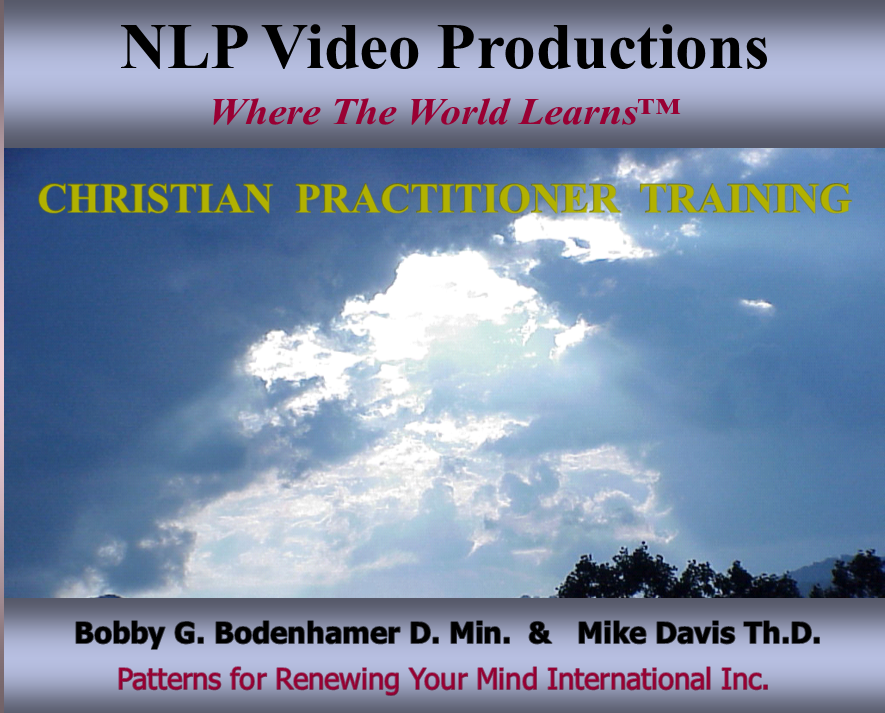
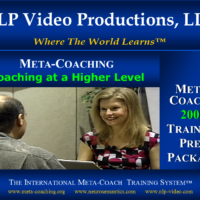
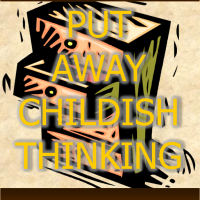
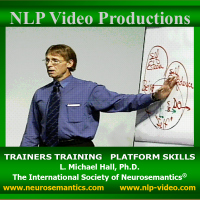
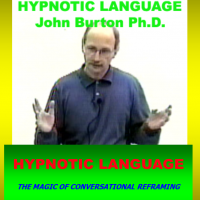
Reviews
There are no reviews yet.